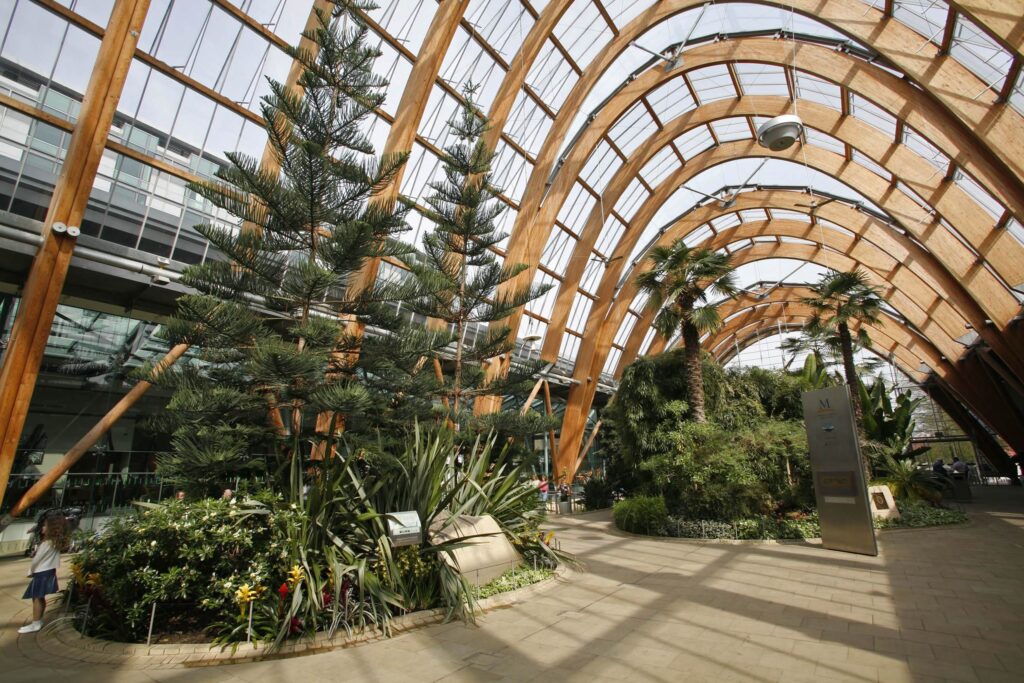
What is a Winter Garden and Its Importance in Interior Design
A winter garden is a unique architectural and design solution that allows you to enjoy the beauty of nature year-round without leaving your home. In interior design, a winter garden serves as a unique space for relaxation, meditation, and inspiration.
It’s a place where you can escape from noise and hustle, surrounding yourself with tranquility and peace that comes from being close to nature. Additionally, a winter garden makes the house brighter and more spacious, creating an additional area for relaxation and entertainment.
It’s important to note that a winter garden is not just a beautiful addition to the house. It is a complex system that requires a thoughtful approach to the selection of location, materials, plants, and lighting. However, all efforts are rewarded with the pleasure of having your own corner of nature in your home.
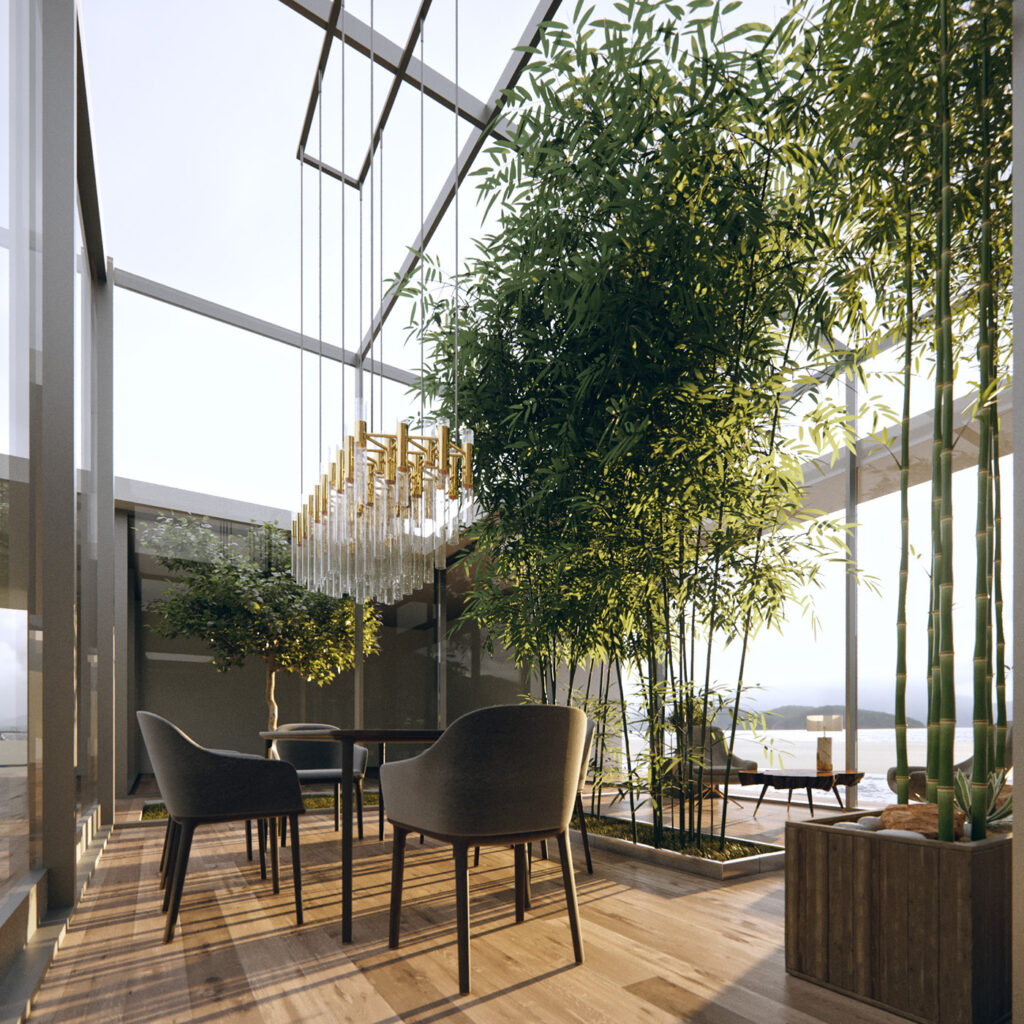
Types of Winter Gardens: Open, Closed, Attached, and Standalone
A winter garden is a unique space that allows you to enjoy the beauty of nature regardless of the weather and the season. Depending on your preferences, location, and budget, you can choose different types of winter gardens: open, closed, attached, and standalone. Let’s take a closer look at each of them.
Open Winter Gardens: This type of winter garden is an open space, usually in the form of a veranda or terrace, where weather-resistant plants are grown. The main advantage of such a winter garden is the opportunity for direct contact with nature, which allows you to get the maximum amount of fresh air and sunlight. However, its main disadvantage is the limited choice of plants that can withstand cold and wind.
Closed Winter Gardens: These are fully glazed spaces that protect plants from any adverse weather conditions. They provide ideal conditions for the growth of a large number of plants and allow you to enjoy greenery all year round. The downside of closed winter gardens is the need for expensive heating, ventilation, and humidification systems.
Attached Winter Gardens: These gardens are built as an extension to an existing house, providing convenient access from the house and the possibility to use it as additional living space. Adding a winter garden to a house can significantly increase its value, but it requires complex construction work and may raise heating costs.
Standalone Winter Gardens: These are independent structures that are usually used for large gardens or in cases where attaching a winter garden to the house is not possible. They can come in any shape and size and can be placed in any convenient location on the plot. However, building a standalone winter garden can be more expensive and requires separate heating and water supply systems.
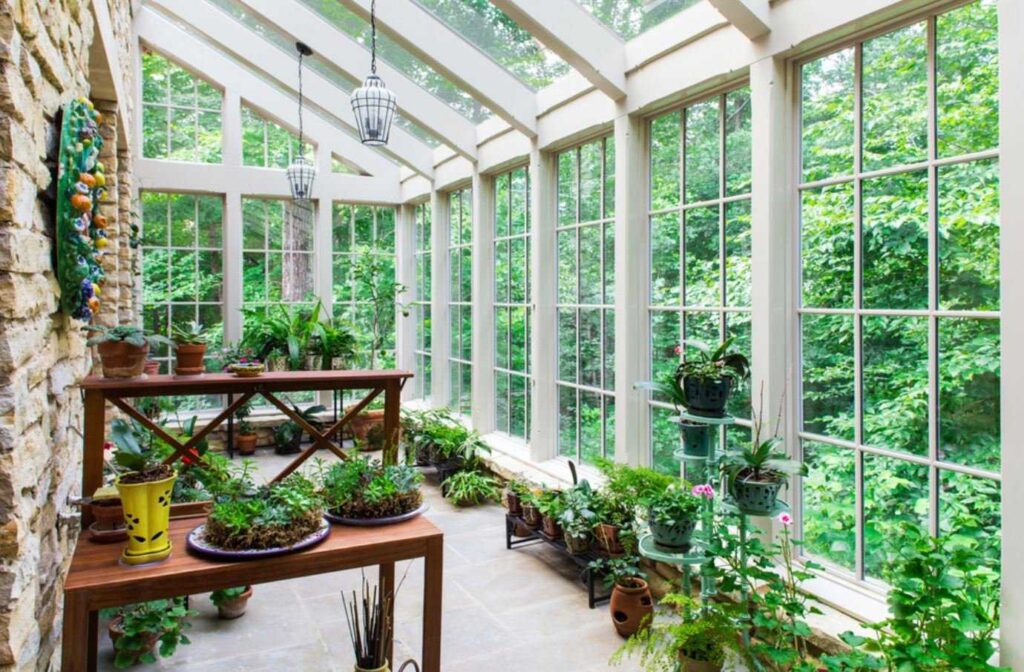
Materials and Construction Technologies of Winter Gardens
The construction of winter gardens requires the use of special materials and technologies to provide optimal conditions for plants and maximum comfort for people. Let’s consider the main ones:
Frame Materials: Key materials for winter garden frames are wood, aluminum, and PVC. Wood provides an attractive appearance and excellent insulation, but requires regular maintenance. Aluminum is lightweight, durable, and requires minimal maintenance, but its insulation is worse than that of wood. PVC is a budget option with good insulation and minimal maintenance requirements.
Glass: Double or triple glazing with argon filling is used for maximum insulation. Additionally, various coatings can be applied to protect from UV rays and overheating.
Heating and Ventilation: Systems for heating and ventilation are usually installed to maintain optimal temperature and humidity in the winter garden. They can be centralized or localized.
Lighting: During the winter or on cloudy days, additional lighting may be required to support plant growth. Special phyto lamps are used for this purpose.
Irrigation: It depends on the type of winter garden and selected plants, but often requires the installation of automatic irrigation systems.
Finishing: It depends on the style of the winter garden, but natural materials such as stone or wood are often used to emphasize the connection with nature.
All these aspects require careful planning and professional installation to ensure the durability and comfort of using the winter garden.
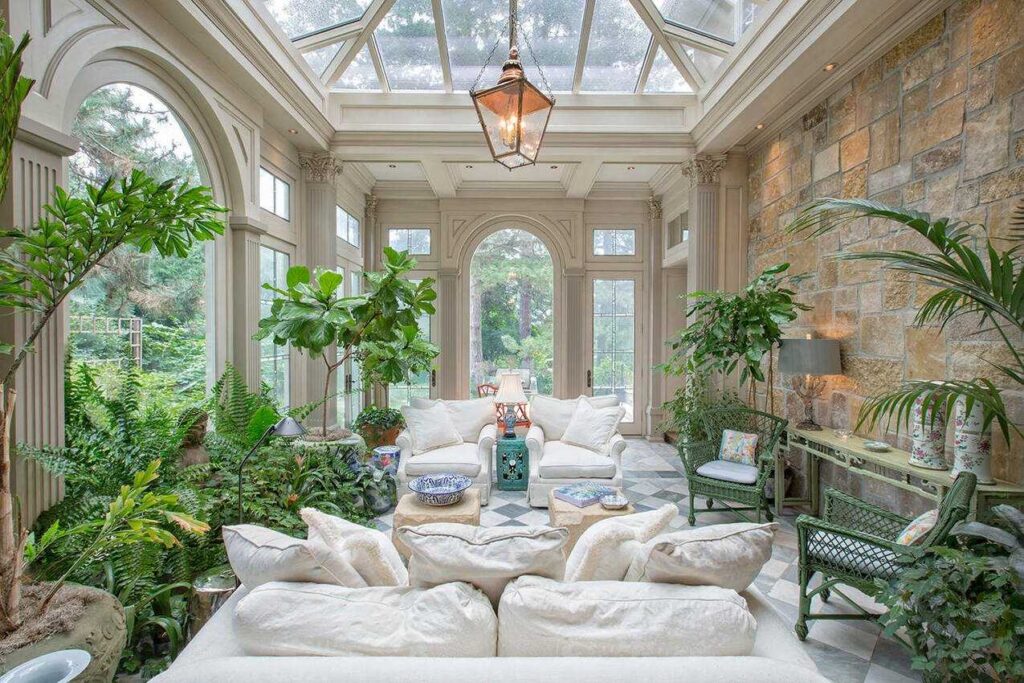
Selecting Plants and Decorating the Winter Garden: Suitable Plants and Care Features
The decoration of a winter garden involves selecting plants and arranging them. Let’s consider the main aspects:
Selecting Plants: The main criteria for choosing plants for a winter garden include their lighting, temperature, and humidity requirements, as well as their size and growing habits. There are many types of plants suitable for winter gardens, including tropical and subtropical species, such as orchids, palms, ficus, citrus trees, and many others. However, it’s important to consider that tropical plants usually require high humidity and warmth, while some others may prefer cooler and drier conditions.
Placing Plants: Placing plants in the winter garden should consider their lighting and space requirements. Larger plants are usually placed in the center or against walls, while smaller ones can be placed on shelves or suspended. Some plants typically require direct sunlight, while others prefer partial shade.
Plant Care: Taking care of plants in the winter garden includes regular watering, fertilization, controlling humidity and temperature, as well as prevention and control of pests and diseases. It’s important to note that the requirements of different plant species can vary significantly, so successful cultivation requires certain knowledge and experience.
Decorating the Winter Garden: In addition to choosing and placing plants, decorating the winter garden can include installing decorative elements such as sculptures, fountains, stones, or wood. It’s important to consider the style of the winter garden and harmoniously incorporate these elements into the overall design.
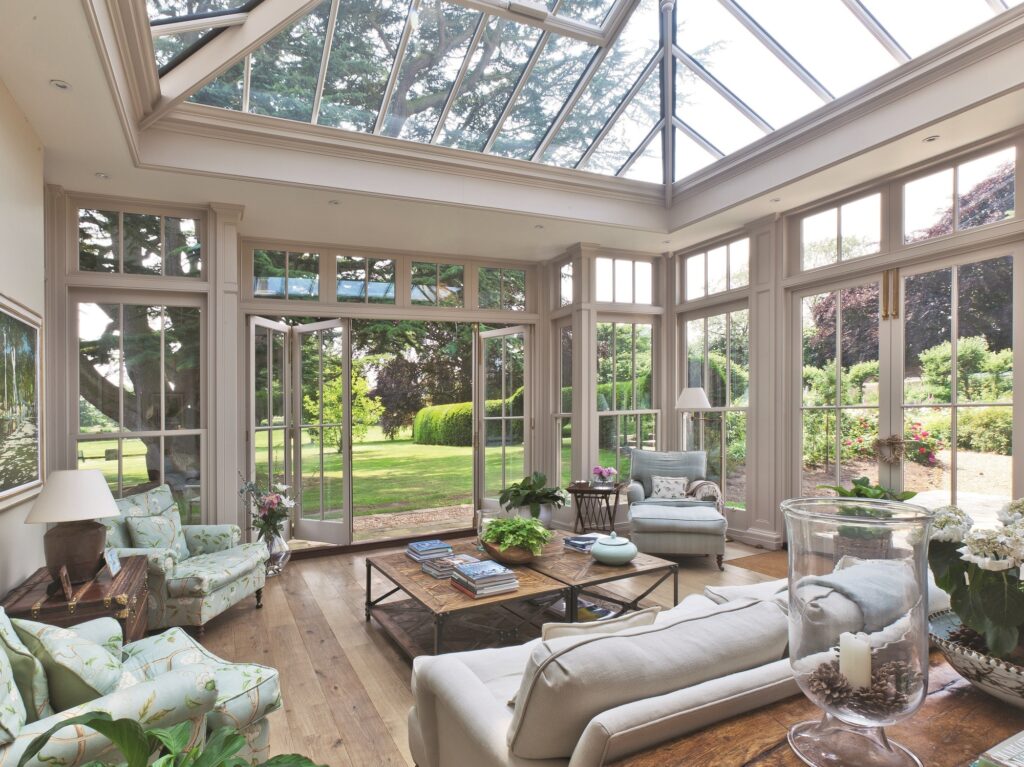
Lighting in the Winter Garden: Natural and Artificial
Lighting plays a key role in decorating the winter garden, providing the necessary conditions for plant growth and creating a cozy atmosphere. The main types of lighting include natural and artificial lighting.
Natural lighting in the winter garden is provided by using transparent or translucent materials for the walls and roof. Large glass surfaces or polycarbonate panels allow sunlight to penetrate, creating ideal conditions for photosynthesis in plants. However, it’s essential to consider that some plants prefer partial shade and may not react well to direct sunlight. Moreover, excessive lighting can lead to overheating of the space, so the use of blinds, curtains, or other shading systems may be necessary.
Artificial lighting in the winter garden is used to maintain the optimal level of illumination throughout the day, as well as during dark hours or in areas with insufficient natural light. There are many types of suitable lamps for winter gardens, including LED lamps, fluorescent lamps, metal halide lamps, and others. When choosing artificial lighting, it’s crucial to consider the spectrum of radiation, as it should match the requirements of the plants.
Combining natural and artificial lighting helps create optimal conditions for plant growth and a cozy atmosphere in the winter garden.
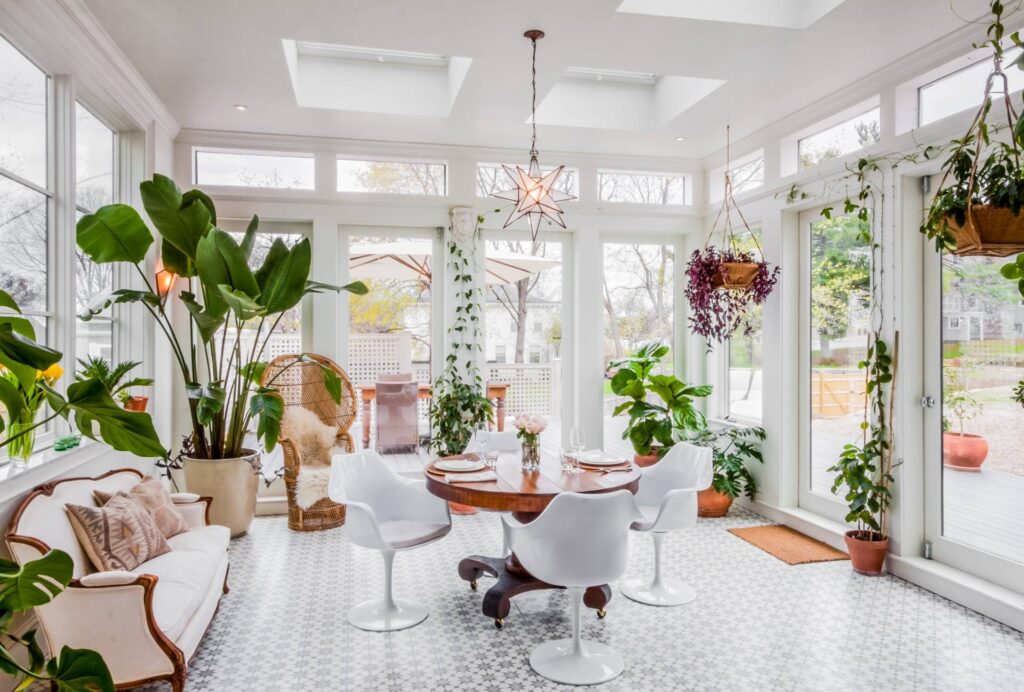
Climate Systems for Maintaining Optimal Temperature and Humidity
The climate system in the winter garden is a complex but integral part of its effective operation, aimed at creating and maintaining optimal conditions for plant life and human comfort. It includes heating, ventilation, and air conditioning systems, as well as humidification and drainage systems.
Heating is necessary to maintain warmth during the winter months when the outside temperature may be below the optimal range for most plants. Heating sources can be radiators, underfloor heating, heaters, or integrated heating systems.
Ventilation is important for providing fresh air and preventing stagnation and overheating. It can be natural (through windows, ventilation hatches) or forced (using fans and air ducts).
Air conditioning may be necessary to control temperature and humidity during warm months or in regions with a hot climate. Air conditioners can help cool the air and reduce humidity when needed.
Humidification and drainage are essential for maintaining the optimal humidity level, especially for tropical and subtropical plants that require high humidity. Humidification systems can range from simple evaporators to more complex misting systems. Drainage is needed to remove excess water and prevent flooding.
When choosing and installing climate systems, it’s important to consider the types of plants in the winter garden, as well as local climate conditions and building characteristics.
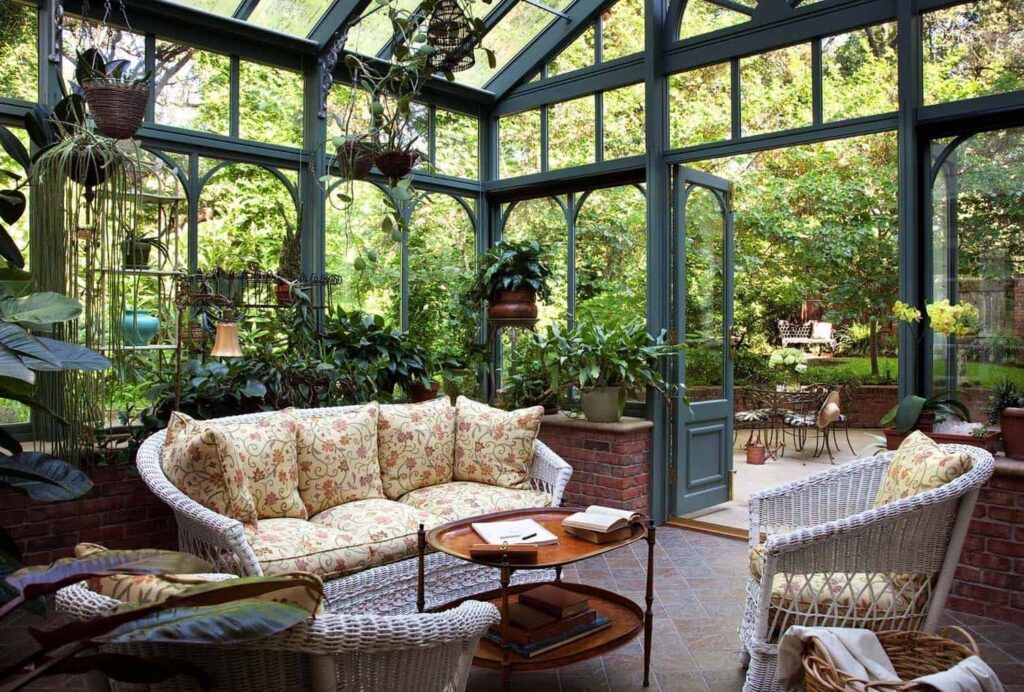
Furniture and Accessories for the Winter Garden: Selection and Arrangement
Furniture and accessories play an important role in creating a cozy and comfortable atmosphere in the winter garden. When choosing them, not only the design but also functionality should be considered, as well as the specific environment of the winter garden, including humidity, lighting, and temperature.
Furniture for the winter garden should be resistant to humidity and temperature changes. It can be made of rattan, bamboo, metal, or specially treated wood. Sofas, chairs, tables – everything should contribute to relaxation and enjoying nature inside the space.
There is also the option of using furniture designed for the garden or outdoor use, which can add an outdoor atmosphere indoors.
Accessories add individuality and coziness to the winter garden space. These can be cushions and blankets, pictures and posters with natural motifs, candles or lanterns, ceramic or glass vases for flowers, as well as other decorative elements. It’s important that they harmonize with the overall style of the space and not overload it.
The arrangement of furniture and accessories in the winter garden is also important. It is necessary to consider the distribution of light and humidity and ensure easy access to plants for care. For example, you can create a relaxation area with a sofa and coffee table near the brightest window, while leaving other areas for plants and their care. Ultimately, the main thing is to create a place where you feel comfortable and enjoy spending time.
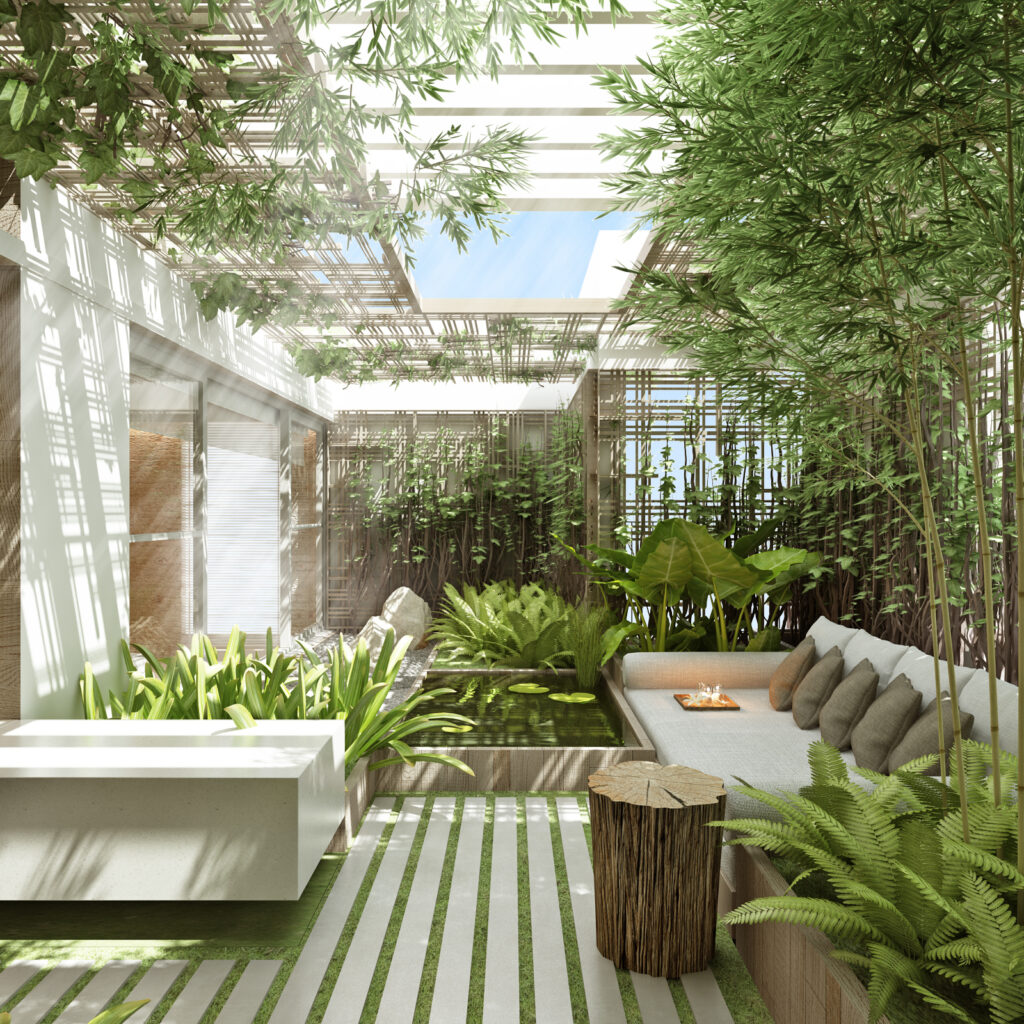
Examples of Winter Gardens in Various Interior Styles
A winter garden can be decorated in any style, and its design largely depends on the overall style of the home interior. Let’s consider a few examples of winter gardens in different styles.
Classic style. In the classic style, the winter garden is often decorated in white and pastel tones using wrought iron furniture, elegant plants, and antique accessories. The fireplace, armchairs, and tea table play an important role, creating an atmosphere of coziness and comfort.
Modern style. The modern style is characterized by minimalism and functionality. Here, metal furniture, geometric shapes, and large panoramic windows can be used. Plants are selected with an emphasis on interesting forms and textures.
Country style. In the country style, the winter garden can be designed as a cozy nook with wooden furniture, numerous potted plants, and decorative elements in the spirit of rural life, such as oil lamps or knitted rugs.
Scandinavian style. The Scandinavian style is characterized by simplicity, naturalness, and a love for light. For decorating the winter garden in this style, light wooden furniture, accessories made of natural materials, and plenty of greenery will be suitable.
Eclectic style. In the eclectic style, you can combine elements of different styles, creating a unique and individual interior. It can be a mix of antiques and modern art, various plants, and original accessories.
These are just a few examples of how a winter garden can be decorated.
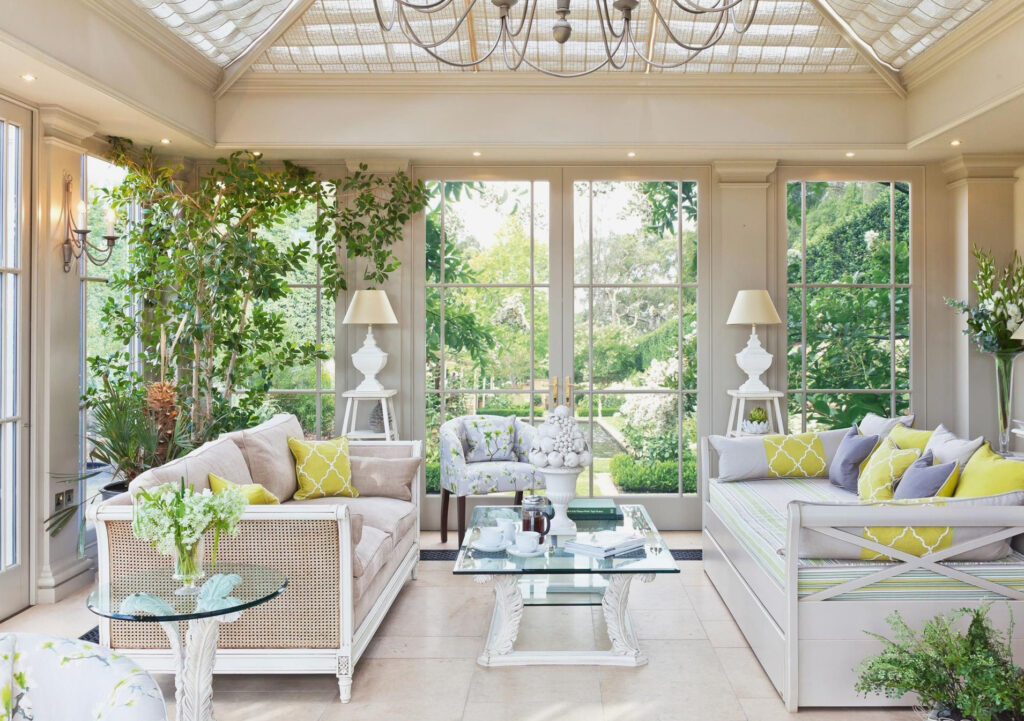
Conclusion: How to Properly Plan and Arrange a Winter Garden in Your Home
A winter garden is a unique place in the home that combines a love for nature, a desire for comfort, and the aspiration to create a cozy space for relaxation and leisure. Regardless of the type you choose – open, closed, attached, or freestanding – a winter garden requires careful planning.
First, you need to determine the type and style of the winter garden, considering the overall design of the house and your personal preferences. The selection of materials and construction technologies depends on many factors, including climate, available space, budget, etc.
The choice of plants also plays a key role in decorating the winter garden. It’s important to consider their requirements for light, temperature, humidity, as well as their appearance and size.
Lighting is another essential aspect. Artificial lighting should complement natural light to create optimal conditions for plants and a pleasant atmosphere for relaxation.
Don’t forget about the need for a climate control system, which will help maintain the required temperature and humidity in the winter garden.
The choice of furniture and accessories also depends on the style and functionality of the winter garden. They should not only be beautiful but also comfortable and suitable for outdoor use.
In conclusion, a winter garden is an investment that requires time, effort, and financial investment, but it pays off with the pleasure of having a piece of nature right in your home.
